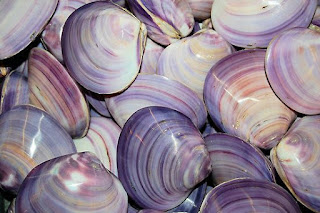How-To Choose The Right Interior Paint Finish

With the weather cooling down and the focus shifting to interior
design, we’re chatting the next most important factor after you’ve chosen your
perfect colour – THE FINISH!
Contrary to popular belief, the job isn’t done once you’ve
selected your desired paint colours. Selecting the right paint finish is
another key factor in determining how your final product will not only look but wear as
well. In other words, the final sheen (aka how shiny) and the longevity of the
paint job!
There are three general categories of paint finishing to choose
from, such as, flat (or matte), low luster (satin/eggshell) and gloss. Before
choosing which finish you’d like, here are some things to consider:
-
What area of the house the paint is being used for?
-
Surface area conditions
o
Smooth or rough?
o
Imperfections? Do you plan on repairing prior to painting?
-
Lighting
o
How much natural light is available
o
Type of light bulb being used
-
Your personal taste!
After you’ve taken these factors into consideration, you can
examine the pros and cons of each finish and determine which is most suitable for
your needs. Read on for our personal recommendations here at Painters Plus Inc.on which paint finish you should consider and why!
Flat
(or matte) Finish: Flat is the most low-sheen out of the types with a
non-reflective finish.
-
PRO: We recommend a flat finish if your wall has imperfections
like joints, uneven texture and patches. Flat paint absorbs light which makes
imperfections on the surface less noticeable. Great for concealing and
touch-ups are simple with leftover paint on hand! Because there’s no sheen, touch-ups
wont be visible as they would be with glossy paint.
-
CON: Not very durable and needs to be cleaned carefully. The
paint will wear down from excessive scrubbing causing the sheen to appear
blotchy in spots.

Recommended
places to use: Ideal for interior walls, ceilings and low traffic areas as
cleaning will be minimal.
Satin
(or eggshell) Finish: Satin has a slight amount of light that reflects off which
causes it to have a higher sheen. The higher the sheen, the more durable the paint
is, which is why satin is the preferred choice for high-traffic areas.
-
PRO: Long-lasting, easy to clean (damp cloth works well), attractive
and practical.
-
CON: The sheen highlights imperfections on the surface. Prepping
the wall and using a primer is necessary.
Recommended
places to use: Dining room, living room and bedrooms
Gloss
(or semigloss): Gloss is the highest sheen and the most durable finish. It’s
great for those that desire a radiant sheen and shiny appearance.
-
PRO: It’s durability helps the paint to withstand multiple
cleanings. Great finish to use as an accent.
-
CON: Highlights imperfections and prepping and priming the
surface is necessary.

Recommended
places to use: Kitchen, Bathroom, Trimming and baseboards
~ Your space, endless possibilities... ~
www.painters-plus.ca
www.painters-plus.ca



















